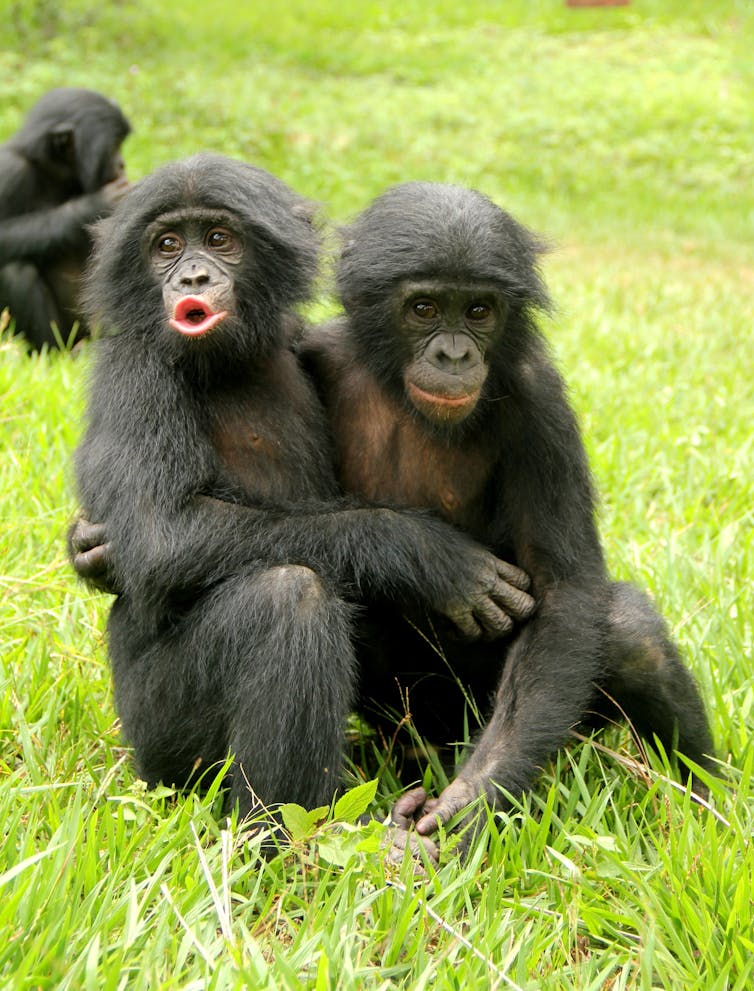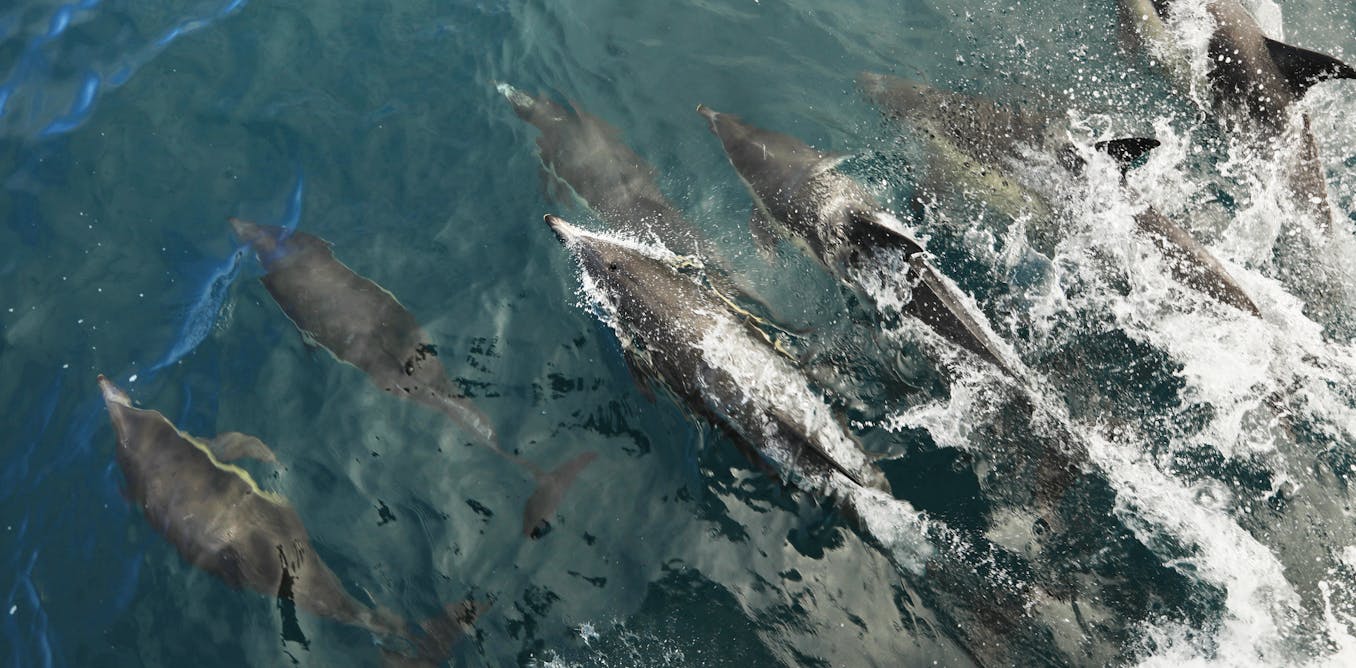When people find out we study chimpanzees, they usually ask about their dark side. “You know chimpanzees kill each other, right?” or “Aren’t they the only animals besides humans that wage wars?”
Chimpanzees are often cast as a mirror to our darkest tendencies, embodying violence, territoriality and power struggles. In contrast, bonobos are known as the most empathetic ape, heralded as the pacifist hippies, led by female collectives, who make love, not war.
But our new research suggests it is time to leave these stereotypes at the door.
The violent side of chimpanzee life has long captured the public imagination, and it’s true that when frustrated or feeling competitive, chimpanzees sometimes attack without much warning or provocation.
However, what people often don’t know is that chimpanzees have a much softer side and can show amazing empathy towards one another, including reconciling and comforting others. Some of the first work conducted on animal empathy, led by the late primatologist Frans de Waal in the 1970s, explored this empathy in chimpanzees. De Waal and his colleagues provided beautiful examples of chimpanzees comforting one another, using behaviour that mirrors how we do so ourselves, such as embracing, touching and stroking.
For a long time, scientists thought empathy was uniquely human, tied to our complex emotional skills and ability to think about others’ needs and perspectives. But this view was challenged when scientists started to notice animals responding to others in need, offering them help and comfort.
Empathy is crucial for our social functioning. Consider the consequences when humans lose empathy for one another. For example, the perpetrators of abuse or during times of war. Thanks to research conducted with primates, rodents and other animals, we now know the roots of empathy run deep, reaching back through the branches of the evolutionary tree.
As animals cannot talk to us, we cannot truly know what they are thinking or feeling. Yet research over the past several decades has shown that many animals have rich mental and emotional lives, including our closest living relatives, the bonobos and chimpanzees.
Having separated from us around 5 to 7 million years ago, they provide us with the closest picture of what our last common ancestor might have been like. The two apes overlap in much of their behaviour and biology. However, differences in aspects of their social structures and dominance relationships mean they can also offer different insights into our own evolution.
Jake Brooker/Chimfunshi Wildlife Orphanage Trust
One quiet afternoon during routine observations at a sanctuary site in Zambia, we saw Misha, a greying middle-aged female chimpanzee emerge from the forest distraught. She wasn’t visibly hurt, but whatever had happened was serious enough to make her lose her cool, like a toddler having a temper tantrum. Normally composed, Misha threw herself onto the ground, legs splayed, screaming in distress. Moments later, something surprising happened. Little juvenile Tina started running towards her.
Tina jumped onto Misha’s belly and embraced her tenderly. Then, another juvenile, Tom, approached to pat her gently. These friendly actions are what we call consolation, the offering of spontaneous comfort towards a distressed peer. We never found out why Misha was so upset, but she quickly settled down after these interactions. Having studied great apes now for over 20 years between us, we have collected hundreds of records of these apparent acts of kindness.

Zanna Clay/Lola ya Bonobo Sanctuary
Rethinking stereotypes
In our new study, we compared consolation between bonobos and chimpanzees. There have been no previous direct comparisons of consolation in the two sister species.
To provide a fair comparison, we studied them in similar environmental conditions over eight months. We studied large social groups at two African sanctuaries, chimpanzees in Chimfunshi Wildlife Orphanage in Zambia and bonobos at the Lola ya Bonobo Sanctuary in the Democratic Republic of the Congo. Against expectations, we found the two species consoled at similar rates and that the greatest source of variation was within each species. In other words, offering comfort was shaped by individual and social characteristics, not species.
Younger chimpanzees and bonobos were especially likely to console others, suggesting empathy emerges early in ape life. Among chimpanzees, young males and close social partners showed the most consistent comforting behaviour. Among bonobos, younger apes again led the way, with strong bonds between peers driving many of the responses.
Our findings challenge the idea that bonobos are naturally more empathetic than chimpanzees and that like humans, the expression of their empathy is flexible, shaped by who you are, who you’re with, and the broader social culture.
Like us, our ape cousins can show remarkable tenderness as well as despotism. Although there are some differences between them, for instance, chimpanzees can be hostile to strangers while bonobos have relaxed territory boundaries, the two apes overlap in their capacity for empathy. This suggests empathy has deep evolutionary roots, perhaps dating back to our last common ancestor. We need to move beyond stereotypes and look at what the science is telling us. Recognising these apes’ capabilities gives us a more rounded picture of the origins of human behaviour and our shared ancestry.

The post “Our ape cousins show us empathy has deep evolutionary roots – new research” by Jake Brooker, Research Associate in the Department of Psychology, Durham University was published on 04/30/2025 by theconversation.com
































Leave a Reply